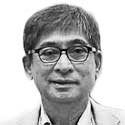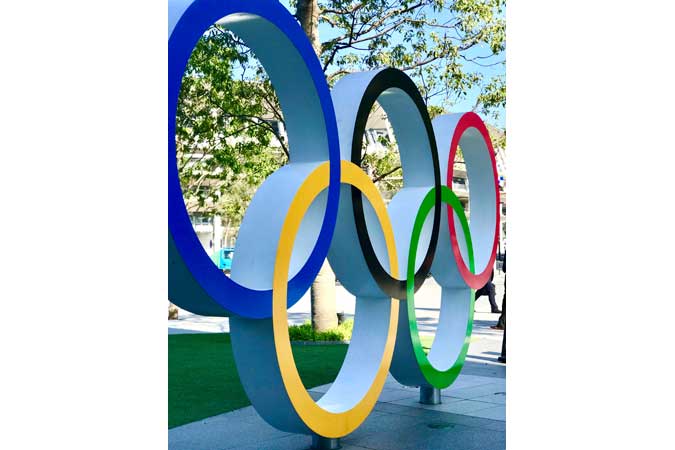
Earning Our Tomorrow
By Philip Ella Juico

The Tokyo Olympics are over, after a year’s delay. The Olympic flame has been extinguished. Athletes, officials, and other people whose participation in any Olympic-type event is essential have also packed their bags and have left. Volunteers, medical and security personnel have also vacated their posts and have moved on to more low-profile and conventional surroundings.
However, even before the last gold medals were awarded to Kenya’s Eliud Kipchoge for the men’s marathon and compatriot Peres Jepchirchir for the women’s 42.195 km race under sweltering heat, analyses have come thick and fast about the Philippines’ and other countries’ overall performance.
Incidentally, the silver medal in women’s marathon was won by another Kenyan, Brigid Kosgei, who timed 2:27:36, some 16 seconds behind Jepchirchir. The individual times of the two Kenyans indicate that the silver medalist ran a competitive race. The bronze medal was won by Molly Seider of the US. The victory by Kenya in both the men’s and women’s marathon races serve to underscore the strategy employed by Kenya both in its grassroots and high-level performance sports development program.
Over the years, Kenya has concentrated on two sports at the Olympics: athletics, mainly middle distance and marathon or road races, and boxing. A review of Kenya’s Olympics gold medal haul shows that all these top spots were in boxing and athletics. This so-called business model says a great deal about Kenya’s synchronized mass based and elite sports development program. At the recreational sports level, however, the most popular sports in Kenya are basketball, volleyball, and soccer. Kenya is nowhere near the top internationally in any of these three sports.
Kenya is ranked 44th in basketball while the Philippines is number 31. Kenya is ranked 32nd in women’s volleyball while the Philippines is at 117 together with several other nations. In men’s football, Kenya was ranked 103 as of May 2017, as against the Philippine ranking of 125, up from near the bottom at 195 in 2006. The comparison shows that in at least three team sports, the Philippines and Kenya are almost at the same level of competitiveness. An exception is a most popular sport in the country, women’s volleyball.
As stated earlier, analyses are being presented about the Philippines’ performance compared to other nations.
One comparative table shows that in Tokyo, the Philippines was the most successful ASEAN country. The Philippines won one gold, two silvers, and one bronze. Close behind are Indonesia (which has seven gold medals in several years of Olympics participation, all from badminton), and Thailand (also with seven golds in prior years’ competitions, most of which came from boxing in the 2004 Athens Olympics). Absent from this ASEAN honor roll was Vietnam which has always been very competitive in the SEA Games and the Asian Games. Word coming out of Vietnam is that athletes have “grievances” about the country’s elite sports policies. Vietnam has one Olympic gold, from shooting.
Back home, it may be instructive to examine the progress of our elite sports program by looking at the performance of athletes in certain key running, throwing, and jumping events in athletics/track and field.
Rather than compare ourselves with other nations in terms of gold or other medals won, it may be more practical to look at how fast we are able to catch up with world standards. One could also consider the rate of improvement of an athlete over a period of time. In effect, we look at the athlete as really competing with himself.
Let us take a look at a field event, the high jump, of which I have a bit of personal knowledge. Around 1958-60, American John Thomas, then a 17-year-old freshman at Boston University, set a new world high jump record of seven feet (2.13 meters). It was only in 1987, or 27-29 years later, that Fil-Am Luis (Chopoy) Juico, a nephew based in San Jose, California, cleared 2.16 meters at a meet in Sacramento, California.
It can be said that at the time Juico set a new Philippine record that equaled Thomas’s world record, we could consider Philippine high jump to have been almost 30 years behind the US. To sort of make up for the delay, in 2005, Sean Guevara, cleared 2.17 meters to break Juico’s 17-year-old record.
In the sprints, some 33 years elapsed before Fil-American Kristina Knott shattered the 100 meters record of 11.28 secs of Asia’s fastest woman in the 1986 Seoul Asian Games, Lydia de Vega. De Vega had clocked 11.28 seconds in the 1987 SEA Games while Knott was timed at 11.27 at the Drake Blue Oval meet in August 2020, while the pandemic was still raging in the US.
These are just a few examples of the rather slow progress in establishing new Philippine records. Additional examples simply heighten the fact that we are most vulnerable in women’s events, particularly the throwing events of shot put, javelin, and, until recently, hammer throw. A number of records in these women’s events have remained untouched since the early 1970s.
The records reveal that we have yet to establish a viable system of talent identification at the grassroots that is followed, like a seamless plan, by a dynamic program at the high school and collegiate levels. The bedrock of all these is a Physical Education (PE) program that could really use a long period of stability and continuity — PE policies change as new secretaries of education take over the leadership of the department.
Outside our shores, many changes are taking place in the area of athlete-college, athlete-national sports association (NSA) relationships. In the US, courts have ruled that college athletes should be compensated. How that will impact the Philippines remains to be seen although some changes in the status quo are anticipated. In the Olympics, there is talk that athletes, especially from Europe, are now demanding payment direct to them for competing in the Olympics. Simplistically, this translates to “pay me to play in the Olympics.”
The impact on Olympism of this play-for-pay concept will certainly have massive consequences. For one, it will complicate our situation in the Philippines as we figure out what are the ingredients needed to exceed our performance in Tokyo and to institutionalize best practices and policies.
We need a period of stability and this is hard to come by during a time of radical change.
Philip Ella Juico’s areas of interest include the protection and promotion of democracy, free markets, sustainable development, social responsibility and sports as a tool for social development. He obtained his doctorate in business at De La Salle University. Dr. Juico served as Secretary of Agrarian Reform during the Corazon C. Aquino administration.